Most pneumatic tools require air tool oil for optimal functionality. This oil is often expensive and sometimes hard to come by, hence the need for viable alternatives.
This article unpacks potential alternatives and how to use them.
Pneumatic oil is essential for all forms of pneumatic equipment since it provides lubrication while the equipment is in use. Here, the oil ensures less friction between moving components, prevents moisture and rust build-up, dissolves sludge, and protects O-rings.
The moving parts in air tools don’t touch. Instead, got a thin film of oil between them and they have various seals and O-rings to ensure airtight sealing. Compressed air moves the parts back and forth. To ensure proper operation, these parts require lubrication, ensuring that the seals and O-rings move as they should without getting damaged.
Following are some of the effective air tool oil substitutes. Check the tool manual before using any of these alternatives to ensure that the specific oil is safe for your application.
The transmission fluid works well for air tools, acting as a lubricant and generally allowing it to work as it should. ATF reduces wear and tear in air tools without creating residue on surfaces.
Automatic Transmission Fluid contains several useful additives including anti-oxidation additives, detergents, anti-foam compounds, etc. ATFs are inexpensive and are perhaps the best air oil substitute.
I suggest the Dexron Automatic Transmission Fluid as a cheaper alternative to air tool oils. Before using this oil, check for compatibility with your air tool.
Marvel Mystery Oil is suitable for most applications and can be used with most pneumatic tools. It contains a strong solvent, which will help lubricate nearly any tool under most conditions, dissolving any gummy residue inside the tool.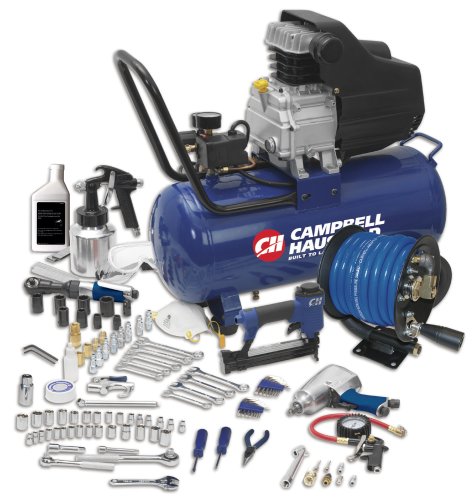
Marvel Mystery Oil – Get Here
It’s slightly more expensive than other all-purpose air tool oils but works really well and lasts long.
Hydraulic oils are ideal for high-pressure hydraulic applications, but they can also be used to lubricate lightly loaded compressors.
However, hydraulic oils usually have high viscosity and you cannot use oil with high weight on pneumatic tools.
Go with the ISO 32 hydraulic oil. This oil has a low viscosity at low temperatures, making it compatible with most pneumatic applications.
3-in-1 Oil is a petroleum-based oil that’s been in use for generations.
Generally, petroleum-based lubricants are not ideal for power tools as they can cause damage to elastomeric rubber sealings. The 3-in-1 oil seems to be the exception to the rule when it comes to petroleum-based oils and air tools. This oil is thin enough to work well in pneumatic power tools and doesn’t leave a gummy residue.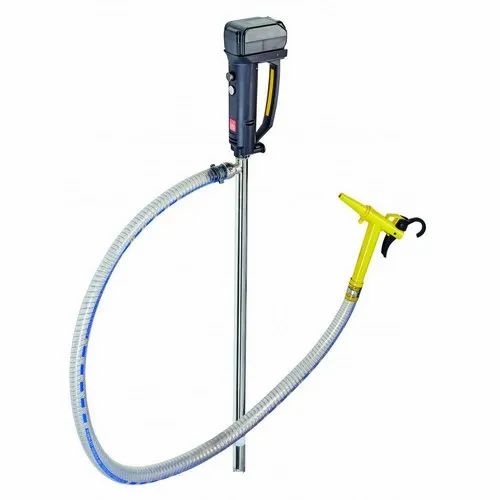
It’s perfect for most household applications with moving parts, like hinges, tools, nuts and bolts, and sewing machines.
Get 3in1 Oil for Pneumatic Tools
The 3-in-one air tool oil also dissolves sludge and gummy residue in your tool, operating it more smoothly. Make sure that you get the pneumatic tool oil and NOT the multipurpose penetrating oil.
As a last resort, you could use 10W 30 low-weight synthetic motor oil. Make sure that it is non-detergent and paraffin-free to avoid the build-up of wax inside your tool.
The above listed are some of the common alternatives to pneumatic tool oils available, and these work well in most applications. Power tool equipment manuals should always indicate which pneumatic tool oil to use with the equipment, how much of it, and oil top-up frequency. When in doubt, always refer back to the manual.
Air tool oil tends to be thinner than compressor oil. It also contains anti-rust agents. You can use a low viscous compressor oil to lubricate your air tools, but not the other way around.
It also contains anti-rust agents. You can use a low viscous compressor oil to lubricate your air tools, but not the other way around.
This is a common lubricant found in many households since a sewing machine needs to be oiled on a regular basis. So, can sewing machine oil be used for pneumatic tools?
If you have no other alternative, you could use sewing machine oil as air tool oil, although it is not recommended.
Unlike air tool oils that are mineral oils or synthetic, the sewing machine oil is a petroleum-based lubricant. Sewing machine oil may react with the rubber sealing and has a higher viscosity.
Your power tool only requires a couple of drops of oil, and one-time use of sewing machine oil is unlikely to cause any damage. However, continuous use of this lubricant can disintegrate the O-rings and will result in air leakage or jammed pistons.
Lubricating oil alternatives are legion, but some options are detrimental to your pneumatic tool’s operation. Here are the two most common ones to avoid:
Here are the two most common ones to avoid:
Diesel is petroleum-based and combustible. It’s never a good idea to use flammable, petroleum-based oils as lubricants in power tools. The petroleum reacts with the rubber made to manufacture the O-rings and other sealers inside the pneumatic tool, disintegrating them. This will create a gummy residue inside the tool, potentially damaging the tool.
In air tools such as impact wrenches or impact drivers with a built-in hammering mechanism, it can ignite diesel causing damage to the vane motor and anvil of the tool.
No, WD40 oil isn’t designed for pneumatic tools and, as such, could potentially damage your air tools. It is a degreaser that is used for removing rust, cleaning, etc. WD40 is a penetrating oil that swells the rubber sealants and in the long run dries the moving parts and can result in wear and tear.
Hence it is not recommended.
Vegetable oil produces a sticky residue inside air tools, affecting their performance and causing damage. This residue attracts dust, creating a solid deposit inside your tool or machine.
This residue attracts dust, creating a solid deposit inside your tool or machine.
Oiling air tools is a crucial step in tool maintenance. Choosing the correct oil and applying it according to the manufacturer’s guidelines ensures that your power tools function optimally and have a long lifespan.
Typically, two types of oils are available for air tools: mineral-based oil and synthetic oil.
Mineral-based pneumatic tool oils are the most commonly used and are considered the standard by most. However, this version is far more volatile than its synthetic counterpart. It thus leads to more significant oil loss during tool operation.
Mineral oil is generally more reactive than synthetic oil, and these reactions cause it to clump up. The tool life span shortens when this occurs, which counts against using mineral oil.
Synthetic tool oils are generally more expensive than their mineral-based counterparts.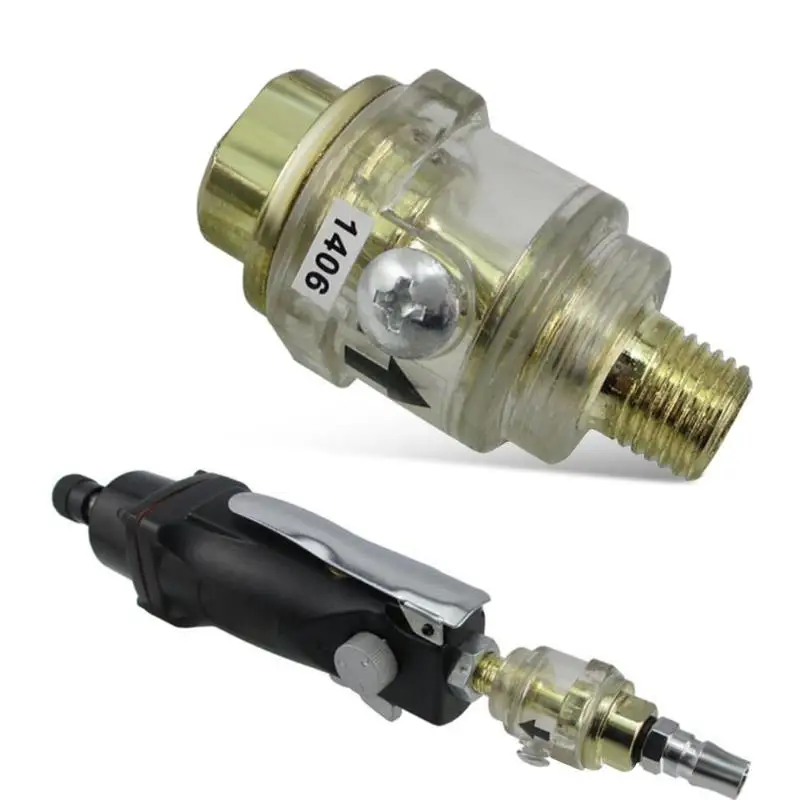 This increased expense is often worth it since it is designed as a high-performance oil. They reduce friction inside the tool, prolonging its lifespan.
This increased expense is often worth it since it is designed as a high-performance oil. They reduce friction inside the tool, prolonging its lifespan.
Synthetic oils aren’t reactive like their mineral-based counterparts and thus won’t clump up inside the tools.
Air tool oils act as a lubricant for pneumatic tools and thus have a low viscosity. They also act as anti-rust agents and clean the tools while in use. Air tool oils contain solvents that dissolve gum and sludge build-up within the tools. This type of build-up could potentially reduce the tool’s speed and power.
In short, the oil should have the following properties.
Air tool oils’ low viscosity allows them to be easily atomized, spreading throughout the tool by compressed air.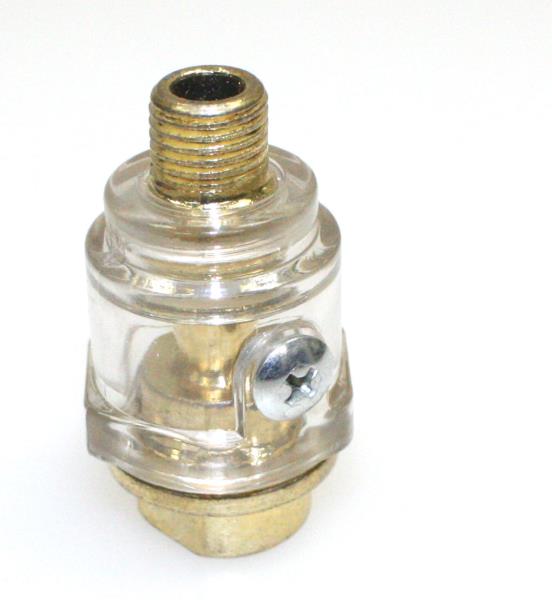 SAE (Society of Automotive Engineers) specifications govern the weight and viscosity. Typical applications call for ISO 32 grade or SAE 10 oil.
SAE (Society of Automotive Engineers) specifications govern the weight and viscosity. Typical applications call for ISO 32 grade or SAE 10 oil.
Here, the 10 represents an oil thickness rating under operating conditions, specifically how temperature affects it.
Oils with a viscosity between ISO 22 to 46 can be used for pneumatic tools, depending on the application.
Oiling air tools is an essential step in basic maintenance. It should be done as frequently as is indicated in the user manual. This differs between tools and applications. If you use your tools more often, you need to oil them more often. For regularly used tools, it’s best to do it according to a set schedule. This ensures that you don’t forget and skip a cycle, potentially compromising your tool’s functioning.
To oil your air tool, you need specific oil containers or tools. These vary depending on the tool and application, so it’s best to check the user manual for more information.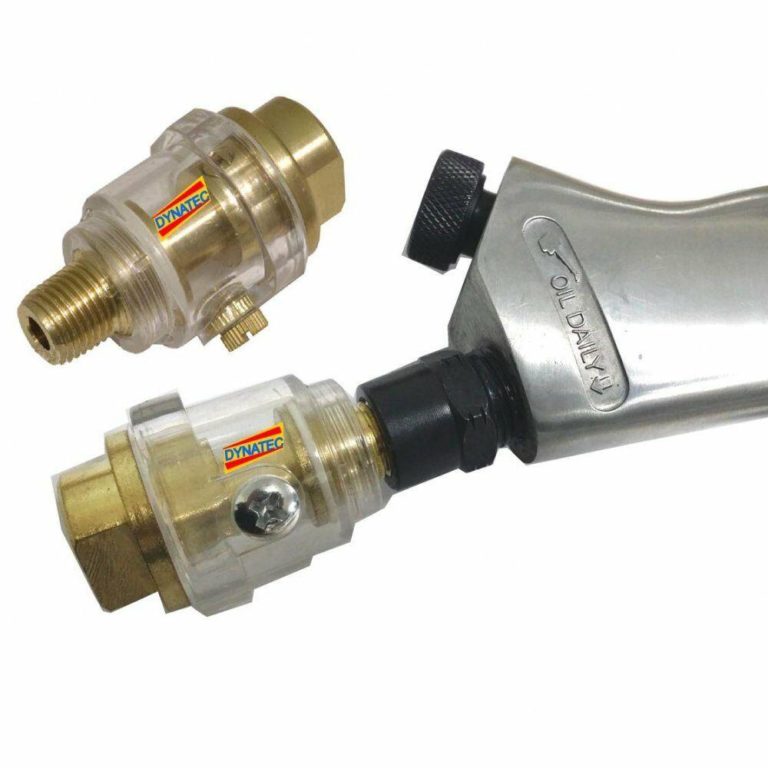 The main aim of these tools is to release oil slowly, helping ensure that you add the right amount of oil to your tool. Adding too much or too little could damage your tools.
The main aim of these tools is to release oil slowly, helping ensure that you add the right amount of oil to your tool. Adding too much or too little could damage your tools.
There are many methods for oiling air tools. The most common ones are outlined below.
This is the most common method of oiling nail guns, impact wrenches, air hammers, die grinders, etc.
If your tool doesn’t a specific oil reservoir, disconnect the compressed air pipe from the inlet of the power tool. Then you could complete the task by adding a few drops of oil to the air inlet. Once you connect the tool’s inlet to the air hose, the compressed air will distribute the oil from here.
Some tools have an oil reservoir. Use a screwdriver or hex wrench set to open the reservoir if yours is like this. Drip oil here until you reach the required volume as prescribed in the manual.
An air tool oiler is specially designed to add oil to pneumatic equipment. Fill the oiler with the correct amount of air tool oil to use this. Next, attach the oiler before the tool’s air inlet. The oil will be distributed through your tool as air passes through the tool oiler. Ensure that the air tool oiler is attached at the tool end of your air system, not at the compressor side. Typically, multiple tools will run off the same compressor system, which may have differing oil needs. Attaching the pneumatic tool oiler to the compressor side will distribute the oil to all equipment and thus potentially damage tools that aren’t compatible with that oil.
Fill the oiler with the correct amount of air tool oil to use this. Next, attach the oiler before the tool’s air inlet. The oil will be distributed through your tool as air passes through the tool oiler. Ensure that the air tool oiler is attached at the tool end of your air system, not at the compressor side. Typically, multiple tools will run off the same compressor system, which may have differing oil needs. Attaching the pneumatic tool oiler to the compressor side will distribute the oil to all equipment and thus potentially damage tools that aren’t compatible with that oil.
A lubricator is attached to the air system, similar to an air tool oiler. This tool releases oil into the air system at a controlled rate, ensuring that the tools are appropriately lubricated while in operation. Adjusting the drip rate (oil-fog or micro-fog) alters the rate at which the oil mist is released into the system – this rate depends on the application.
FRL is short for Filter, Regulator, Lubricator. This unit supplies lubrication to the air tool. It also contains an air filter and regulator. The air filter prevents dirt from entering the power tool’s system. At the same time, the regulator maintains pressure on your tool according to manufacturer guidelines. Attaching this unit is a slightly larger task, but it precisely manages the oil supply to your air tool.
This unit supplies lubrication to the air tool. It also contains an air filter and regulator. The air filter prevents dirt from entering the power tool’s system. At the same time, the regulator maintains pressure on your tool according to manufacturer guidelines. Attaching this unit is a slightly larger task, but it precisely manages the oil supply to your air tool.
All air tools don’t use oil. There determining factor here is the driving mechanism. Generally, if the tool is driven by air, it needs air tool oil. If it’s only controlled by pneumatics, but not driven by compressed air, it doesn’t need to be oiled. There are exceptions to this rule, however.
Some pneumatic tools are made to be oil-less. These include oil-free nail guns for wood finishing, pneumatic screwdrivers used in clean-room conditions, etc. where you cannot have any oil on the final product. Check the user manual if you’re unsure whether your air tool needs oil.
Contents
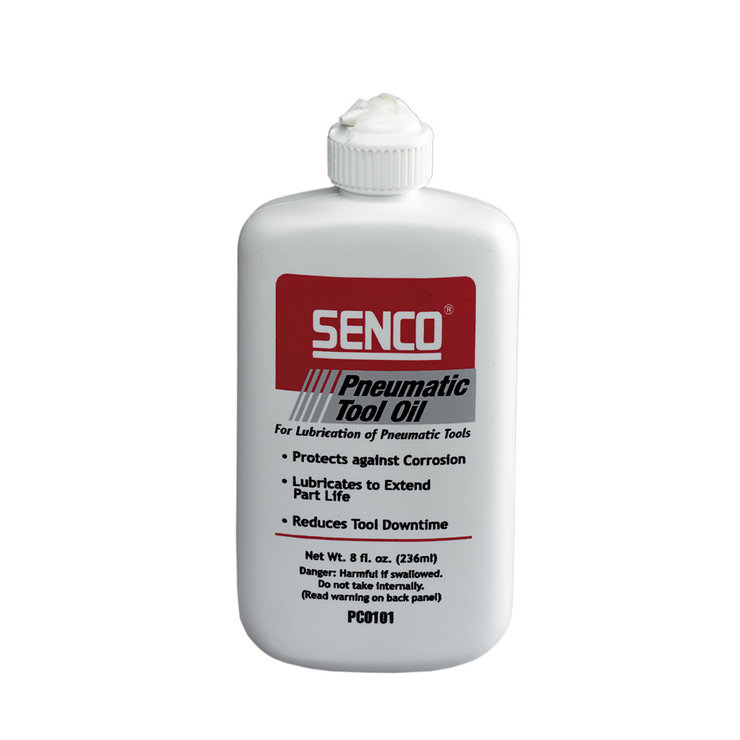 Automatic Transmission Fluid (ATF)
Automatic Transmission Fluid (ATF)Home » Air Tools
Hey! This site is reader-supported and we earn commissions if you purchase products from retailers after clicking on a link from our site.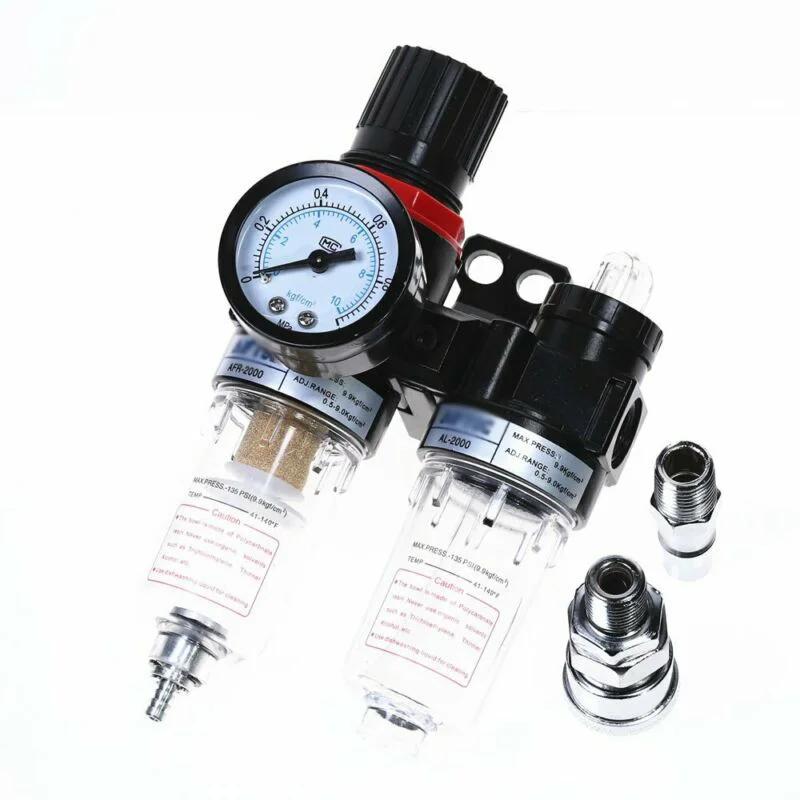
Sometimes you may not be able to find air tool oil for your air tools, so you will need other lubricants, or substitutes, that you can use instead. This article will provide you with all the relevant information on air tool oil substitutes, alternatives and key considerations.
Typically when looking for an alternative or substitute to air tool oil, you have the following 3 options:
Now let’s take a look at each of these pneumatic tool oil alternatives in more detail!
Automatic transmission fluids are usually used in car transmissions because they can perform tasks like:
Air compressors and air tools have similar stresses and so also require these tasks to be performed by their lubricants.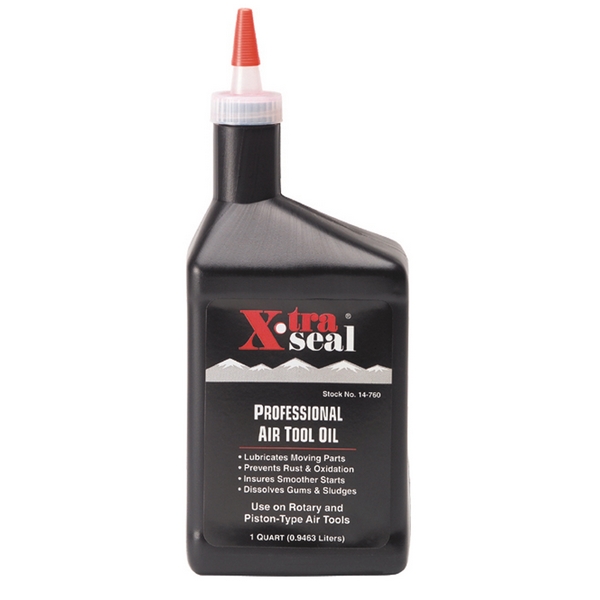 Air tools will produce heat while running and so will need a fluid that can resist breakdowns when heat is present.
Air tools will produce heat while running and so will need a fluid that can resist breakdowns when heat is present.
ATFs contain detergents that reduce the deposits released in the high heat area so that the tool is free of deposits. Though, these detergents themselves may cause damage to your air tool.
ATFs are formulated with enhanced additive packages and robust base oils. They contain antioxidants, anti-wear agents, demulsifiers, and detergents. However, they’re most likely to be incompatible with your air tool unless you find one that your manufacturer has given the green light to.
The detergents in ATFs may cause your air tool to become damaged a lot sooner than expected. Using an ATF within your warranty period, and then the tool breaking, will not allow you to recover any damage.
Hydraulic oils have certain characteristics that may make them suitable for air tool substitution. They have a low viscosity at a low temperature allowing the oil to flow more fluently which is important in an air tool.
Hydraulic oils are also immune to oxidation, which will protect your air tool from rusting. Typically, 10W hydraulic oil is great to use in winter when temperatures are cold, and up to 30W in summer. Though hydraulic oils can be a good lubricator for your air tools, you must make sure that the specific oil is compatible with your air tool.
Synthetic oils are made with a base created of synthetically or artificially made chemical compounds. Synthetic oils tend to be very refined due to the amounts of processing they go through, and so, may only be used for specific cases only.
Synthetic oils will be able to protect your air tools from overheating as they work well in both low and high temperatures. They can also help to reduce noise. Typically 20W synthetic oils are recommended for cold temperatures and 30W oils for warm temperatures.
The thing with synthetic oils, however, you must ensure that the synthetic oil you obtain is for air tools, otherwise, you risk damaging your air tools.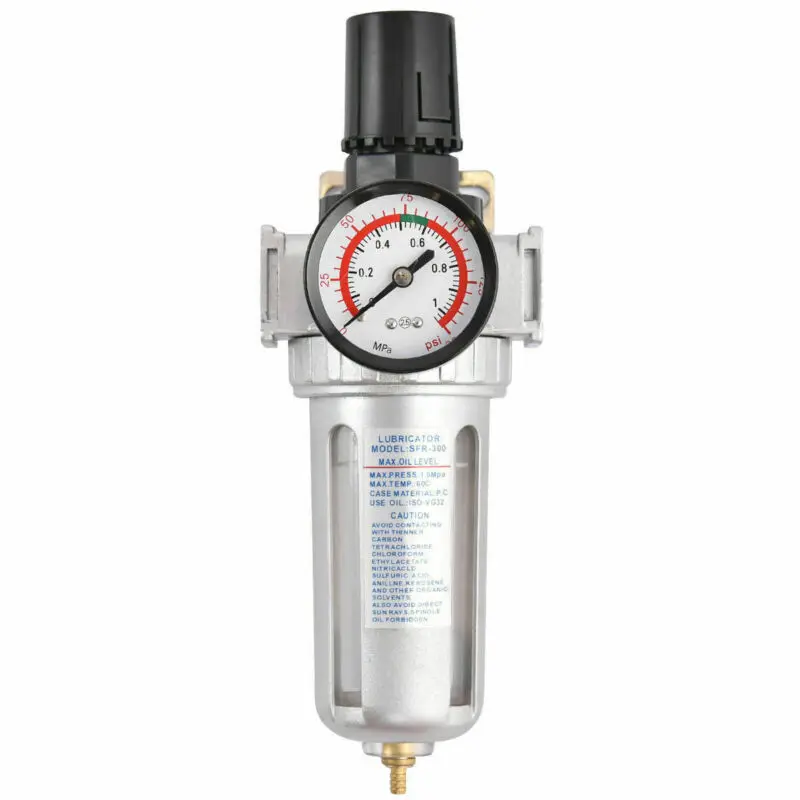
If you’re considering purchasing and using a substitute or alternative air tool oil than the one recommended you must be cautious. The purpose of the oil recommended by the air tool manufacturer is to not only lubricate but also flush particulate from the tool.
The viscosity and fluid properties within the tool oil play a big part in this success, and you may struggle to find the exact properties in a substitute. Too thin of a replacement oil and it won’t last long, too thick of an oil and it will be very difficult to add and may stick around too long, not serving its flushing purpose. Therefore, the chemistry behind the product is very important.
You should always check your tools manual or contact the manufacturer directly before putting any substitute or alternative in your air tools. This will clarify whether it is suitable or not, and ensure you get optimum performance from your tools.
Can you use WD40 as air tool oil?
Nope, you should never use WD40 as air tool oil.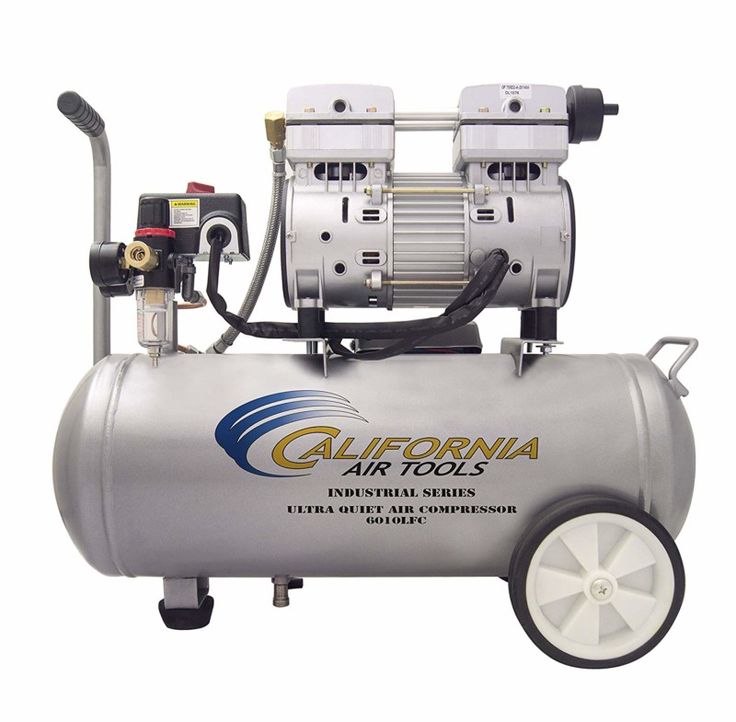 WD40 will eat the rubber seals and is no good here.
WD40 will eat the rubber seals and is no good here.
What oil do you use to lubricate air tools?
Typically mineral oil is designed for use to lubricate air tools. This oil contains anti-foaming and anti-gumming additives which makes it the perfect choice for air tools.
What can I use for nail gun oil?
You should only use lubricating oil specifically made for pneumatic tools like Marvel Mystery or Senco pneumatic tool oil. Other oils will lack the correct viscosity grades or may contain detergents that destroy the seals.
Additional oil reading:
If you have any questions regarding air tool oil substitutes and alternatives, please leave a comment below, with a photo if applicable, so that someone can help you!
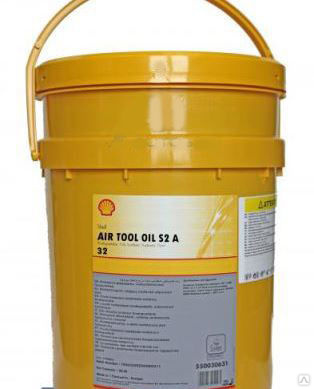 What kind of oil to fill in the lubricator?
What kind of oil to fill in the lubricator? Compressed air is used to operate pneumatic tools, which are used in many industrial and repair areas. But the air leaving the compressor equipment is not ready for use without proper preparation. Condensate, oil and other contaminants in the compressed air can cause significant damage to the tool, significantly reducing its service life. Therefore, the air must be cleaned and lubricated before being fed into the tool by installing a dehumidifier and lubricator or a modular group in the pneumatic line, which provides comprehensive preparation.
More details about the preparation of compressed air are described in a separate article.
In most pneumatic tools, such as pneumatic wrenches, pneumatic ratchets, pneumatic chisels, pneumatic screwdrivers, and so on, compressed air is used to start the drive (motor). Therefore, in addition to air purification, a special oil must enter the air stream, which provides lubrication of rubbing internal mechanisms.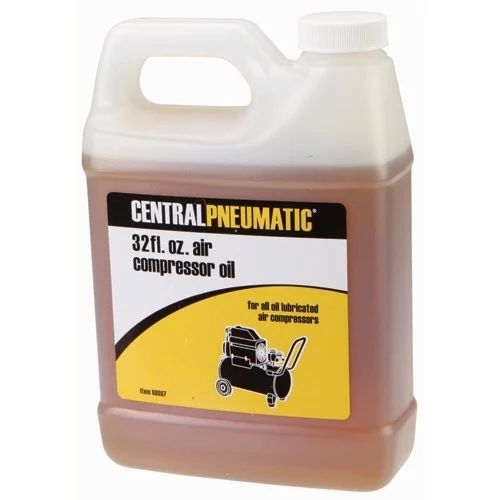
The lubricator is used in pneumatic lines to spray oil into the compressed air stream, providing lubrication to the internal working parts of pneumatic tools and their components, including drive cylinders, valves and motors. The lubricated air helps to reduce wear, keeping your air tool running smoothly and consistently.
Lubricators are divided into:
In the first case, the lubricator is permanently installed in the air preparation system after the pressure regulator or after the dehumidifier with regulator. The entire system is installed as close to the instrument as possible. The length of the hose between the lubricator and pneumatic equipment must not exceed 10 meters. It is worth remembering that such a lubricator should be located above the tool, since the oil aerosol does not move upwards well.
A multi-point lubricator can serve several posts with a tool.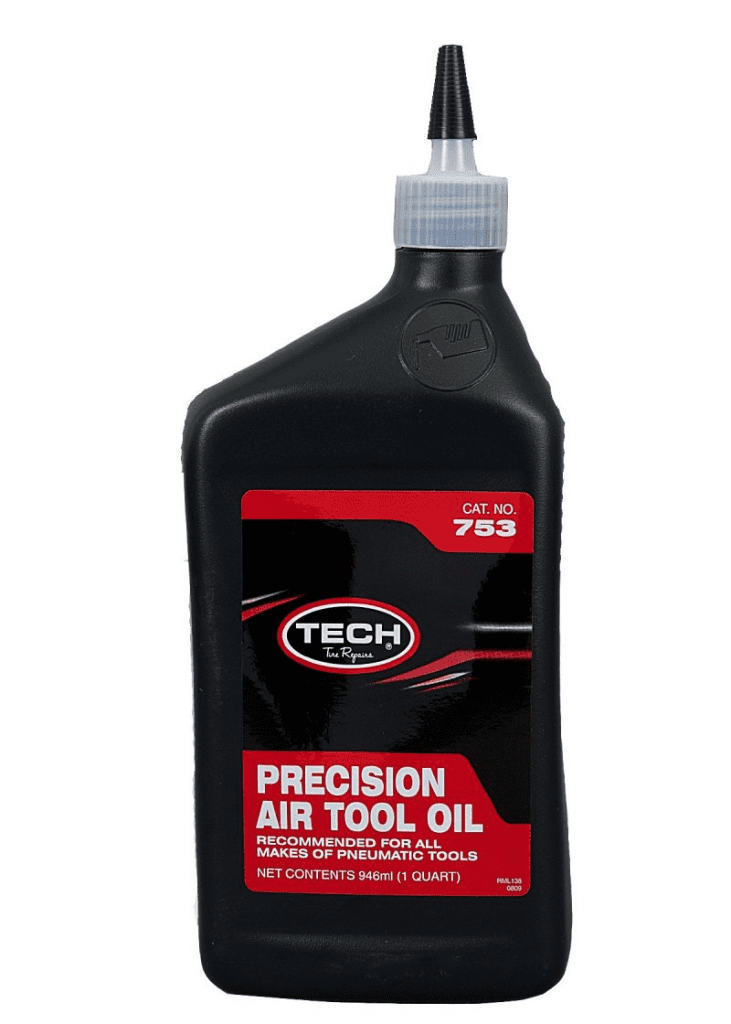 Lubricators are available with different inlet/outlet inch diameters, as well as different oil flask sizes.
Lubricators are available with different inlet/outlet inch diameters, as well as different oil flask sizes.
The flow rate depends on the diameter of the inlet/outlet, so the lubricator should be selected based on the amount of air consumed by the tool to ensure maximum efficiency for all operators. Most models have a special screw that allows you to adjust the intensity of the oil supply.
In the second case, the lubricator is installed immediately after the tool handle and provides lubrication to a single tool. In addition, such a lubricator can be installed in the pneumatic line together with the main model for greater efficiency.
Air entering through the inlet of the lubricator passes through the needle valve, which is connected to the receiving tube. This tube is immersed in a flask with oil. The oil is pulled up by the Venturi effect and ejected as an aerosol into the outlet, and then through the hose, along with air, enters the tool.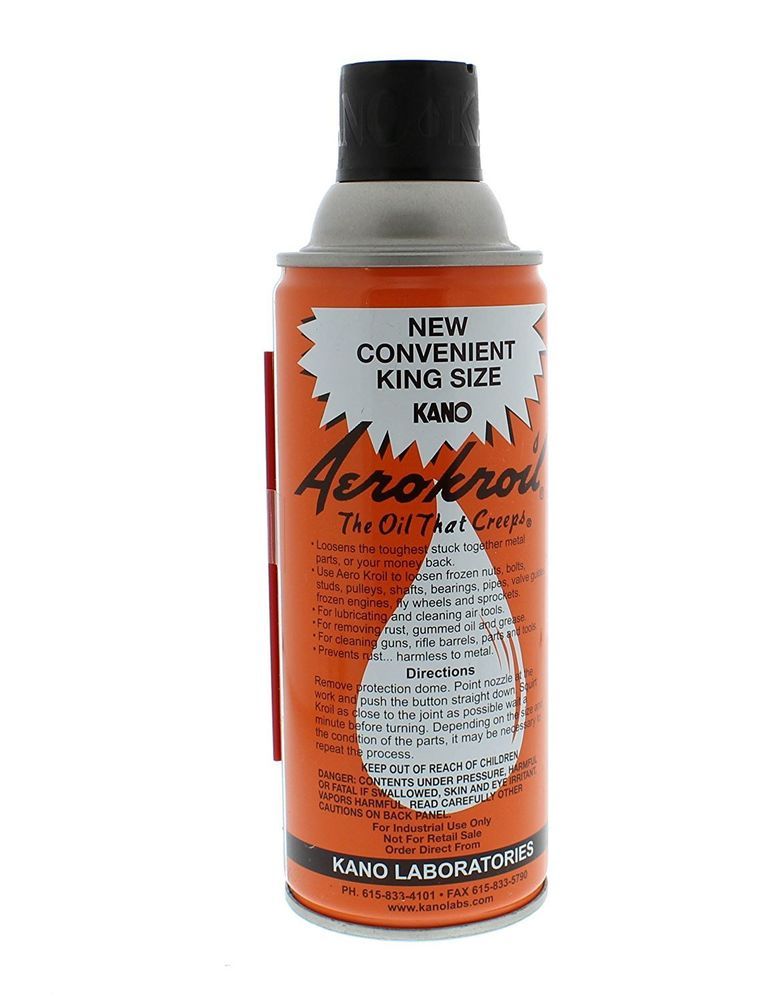
Oil is poured into a stationary lubricator using a funnel through a hole located on the upper plane of the equipment. As a rule, the hole is screwed with a plug for an internal hexagon. If the lubricator does not have a special hole, then the oil is poured into the removed flask, and then installed back.
Oil is poured into a small lubricator through a hole on the body, which is unwound with either a Phillips or a flat screwdriver. The oil is dropped in using a small plastic oil can. In order to control the oil level in the lubricator, there are two marks on its body - the maximum and minimum volume levels.
A special hydraulic oil with a viscosity of 32 must be used.
For example:
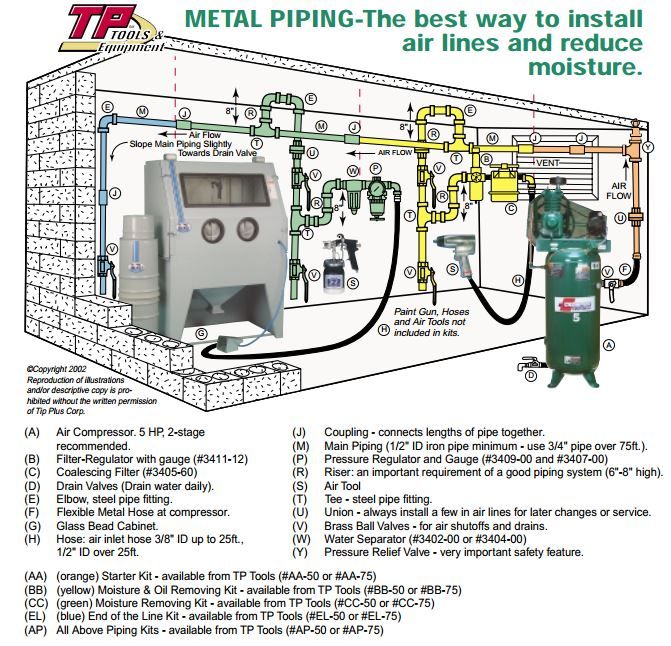 Lubricator for pneumatic tools. A small detail of the correct operation. What is a lubricator
Lubricator for pneumatic tools. A small detail of the correct operation. What is a lubricator Many manufacturers offer special tools to facilitate various tasks of the same type. These include screwdrivers, wrenches, riveters, staplers, nail guns, etc.
They are available in different versions as mechanical, electrical and pneumatic. For home use, when the volumes are small, devices based on the mechanical principle of operation are quite suitable.
But for professional use, especially for construction and repair work, you can not do without electric and pneumatic tools. This is especially true of the nail hammer. With large-scale works, only they can provide the highest quality.
Like any professional, the mounting gun is manufactured taking into account the high functional load. Since this equipment is quite reliable, then, in principle, all maintenance consists in observing generally accepted measures and standards for operation and cleaning.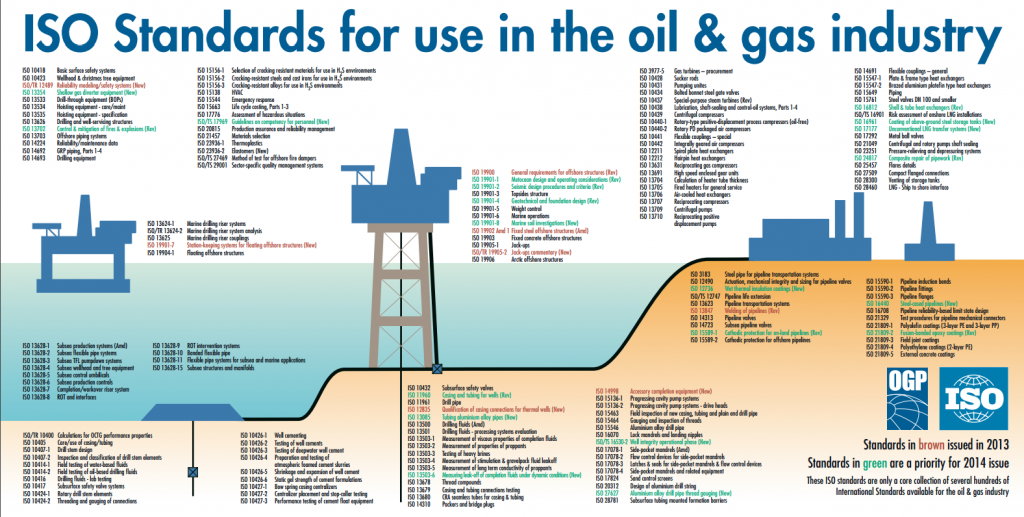
They are quite simple and consist in the removal of contaminants that periodically accumulate on working parts and careful handling. The tool must not be dropped. You need to make sure that water does not get into it. In a word, mechanical deformations and damages must be avoided.
All of the above can be attributed to any devices. As for the pneumatic nailer, here it is necessary to add that this type of tool needs to be lubricated. This is done according to the manufacturer's instructions. Most often, this procedure consists in instilling a few (2-3) drops of oil into the connecting fitting before starting work. This manipulation must be repeated in the middle of the working day if the tool is actively used.
If there is a long break in work, it is recommended to put the same 3 drops into the nailer and make several shots to evenly distribute the oil. This will protect the inner surface from corrosion.
Like any pneumatic tool, the nailer needs proper lubrication.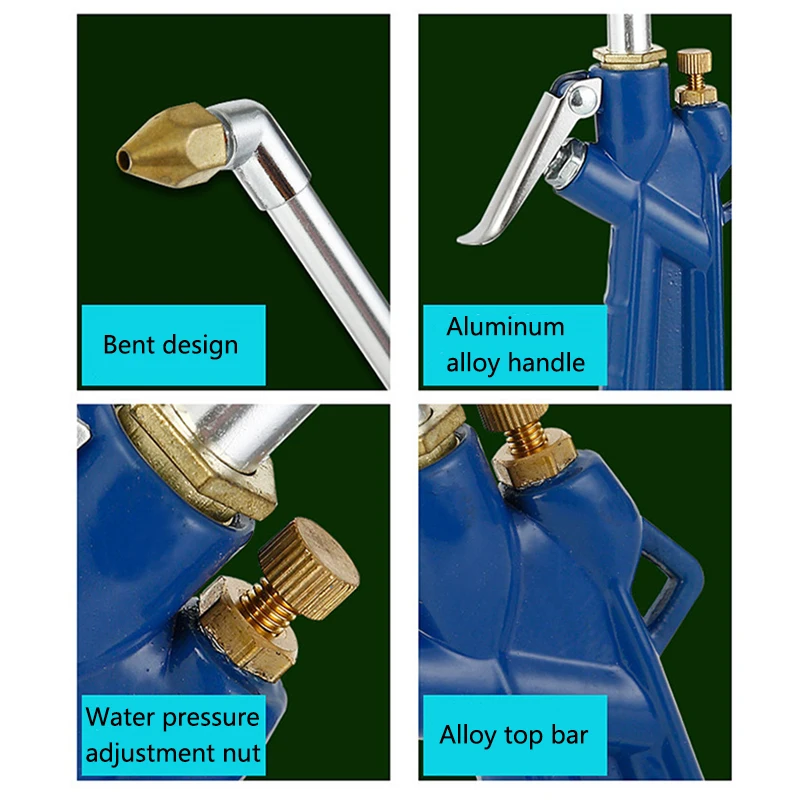 From the manufacturer's instructions, an ambiguous conclusion follows. Some recommend the use of mineral motor oil, while others suggest a special one made for pneumatics. From this it follows that both the first and the second may well fit or be replaced by one another.
From the manufacturer's instructions, an ambiguous conclusion follows. Some recommend the use of mineral motor oil, while others suggest a special one made for pneumatics. From this it follows that both the first and the second may well fit or be replaced by one another.
From experience, it can be concluded that both engine and special oils are identical in their properties. A tool lubricated with either works equally well, showing no signs of wear or corrosion. Although, if it is possible to purchase a lubricant for pneumatic tools, it is still preferable to take it, since it is designed specifically to work with this technique. In addition, it is not expensive both in terms of price and consumption.
Pneumoline in a car service or service station provides air delivery from the compressor to consumers, acting as the “circulatory system” of pneumatic tools. Another important function is to prepare the air for the tool to work. In this material, we will understand the device of the pneumatic line and select air preparation modules for the trouble-free operation of the tool.
Pneumatic line device
The following items are required to connect the end equipment:
Hoses directly affect the reliability of the line and the correct functioning of the tool. In order for the same wrenches to work in accordance with passport indicators, it is important to fulfill the following conditions:
1. A hose with the correct operating pressure and internal diameter has been selected. A high performance tool may have more stringent requirements for hose strength and capacity;
2. When installing the pneumatic line, the balance of the length of the hoses and the number of splitters is observed. The more branches are planned, the more carefully it is necessary to select the section of the distribution hoses and take into account the compressor performance;
3.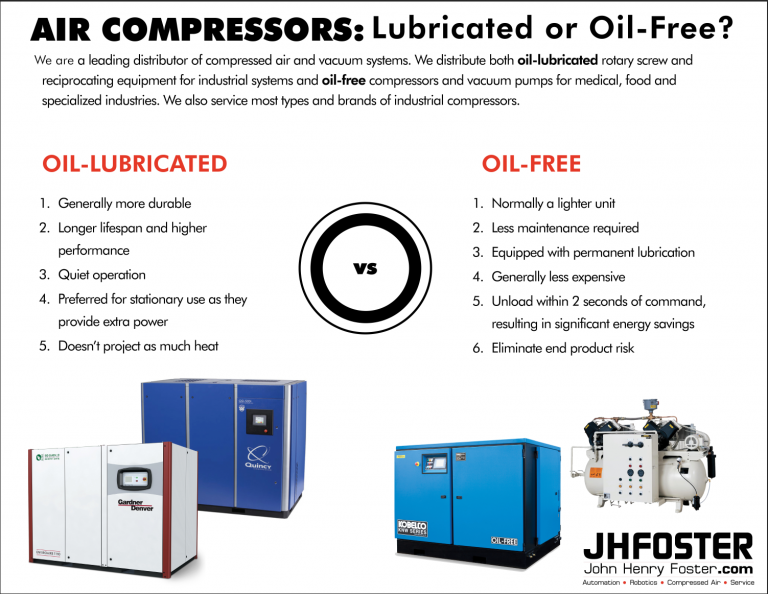 Suitable splitters and quick-release connectors (BRS) are used.
Suitable splitters and quick-release connectors (BRS) are used.
The most tear-resistant reinforced oil and petrol resistant rubber hoses. These are difficult to damage even with a car wheel, but their price is the highest. More affordable hybrid-polymer models with good performance.
First of all, you should determine the hose section, which is selected in accordance with the recommendations of the tool manufacturer. In general, it is recommended to choose hoses with a diameter of 10 and 12 mm, so that there is no “bottleneck” later on. Two models with the same section may have different characteristics of strength and working pressure, so it is worth specifying these parameters for each item separately.
When operating a pneumatic line in a car service, it is useful to use the most flexible hoses, because the “oak” line will cling to everything, it will be easier to break and difficult to move around the room. The bending parameter in the product characteristics is responsible for this property.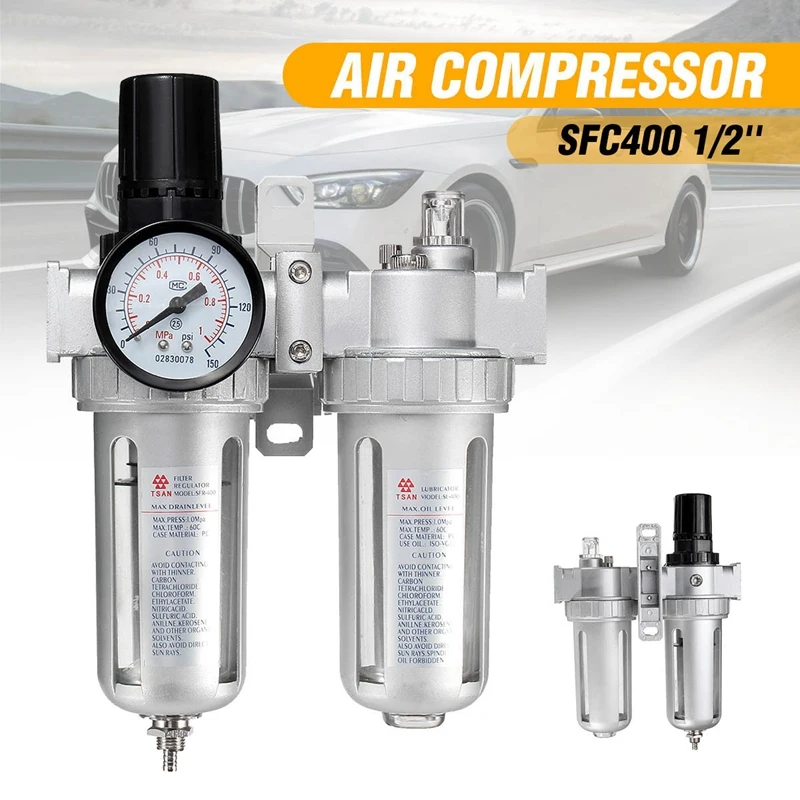
As for the form, there are three options:
Regardless of the shape and material of manufacture, it is not recommended to use hoses longer than 15 m, as this leads to loss of power.
Connecting a tool directly to the compressor outlet is fraught with premature corrosion and increased wear on the working mechanisms of wrenches and tire changers.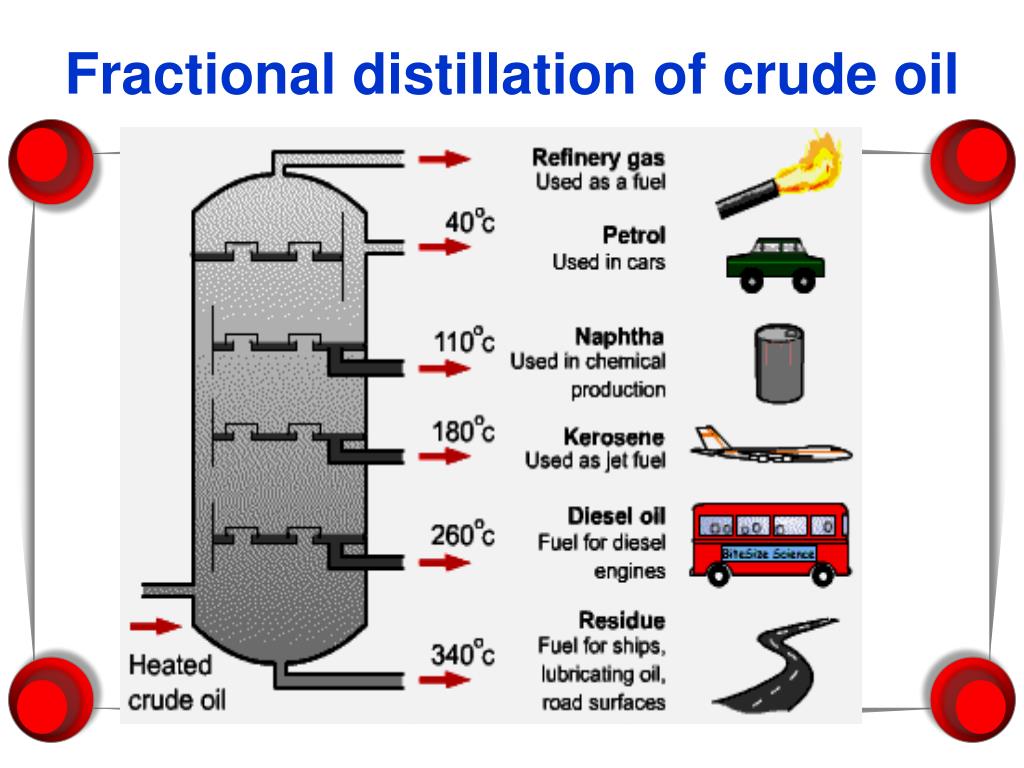
To avoid early repair and replacement, additional equipment for air preparation must be included in the pneumatic line:
The air in the factory or workshop contains too much excess moisture, impurities and dust, which freely enter the operating air compressor.
Impurities and moisture can be effectively separated by air filter driers that use copper alloy fine mesh as the filter element. Like any filter, it requires replacement during operation, as indicated by a change in the color of the filter element.
Like any filter, it requires replacement during operation, as indicated by a change in the color of the filter element.
To remove excess moisture from the filter, there is a faucet at the bottom of the tank. Filter driers are connected at the beginning of the pneumatic line or directly at the tool.
Main differences:
There are special fine filters for painting equipment. They have several cleaning elements that work in series.
Garage Tools store offers Licota filters for a variety of equipment and purposes.
This is a small metal reservoir that sprays a special oil into the passed air to lubricate the working elements of pneumatic tools.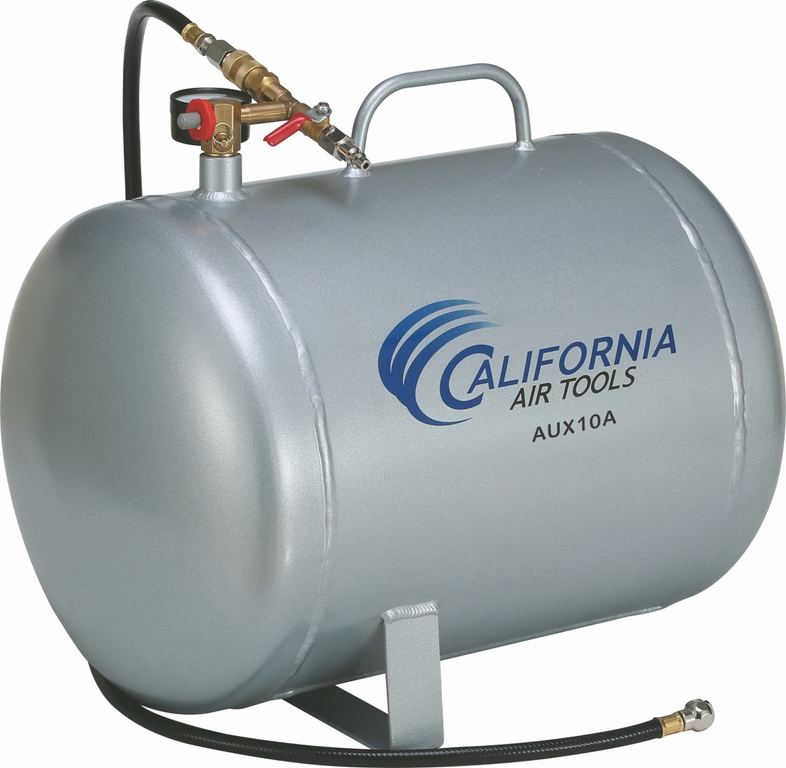
If the lubricator is installed near the compressor, hoses longer than 15 m should not be used for effective lubrication. Alternatively, an in-line lubricator can be selected and placed next to the end tool. This allows a longer hose to be used, but is inconvenient when working with nutrunners. The lubricator is always installed after the filter-drier, so as not to interfere with its operation and not cause premature clogging.
When choosing a lubricator, pay attention to the thread sizes (1/4", 3/8" and 1/2"). Depending on the installation location, it should match the outlet of the compressor or end tool.
Since proper air preparation is impossible without the simultaneous use of filter driers and lubricators, it is logical to combine them in one housing with a single connection when installing the pneumatic line. Such a device is called a modular group or filter lubricator and may additionally include an air pressure regulator and a pressure gauge.
Filter lubricators differ in the cross-section of the threaded connection, on which the throughput of the device directly depends. Therefore, for high power impact wrenches, modular groups with 3/8" or larger threads should be selected.
Pneumatic couplers are often referred to as air tees or air hose tee fittings. Splitters allow you to connect additional lines to the main outlet of the compressor for the simultaneous operation of several pneumatic tools.
Air tees are divided into two types:

To connect the terminal equipment, it is customary to use quick couplings (BRS). With their help, you can quickly and reliably connect a wrench, spray gun and other equipment. BRS also allows you to disconnect the pneumatic tool from the line without stopping the air supply. A herringbone or threaded connection is used as a fitting.
There are two types: “BRS dad” and “BRS mom”. Most often, male fittings are installed on pneumatic tools, and the female connector is screwed onto the hose to the compressor.
When using powerful nutrunners and other productive equipment, it is important to select a coupling with a high capacity. Unlike the standard version, it is designed for high pressure and compressed air flow.
Proper organization of the pneumatic line is a prerequisite for the operation of an air tool at full capacity. In addition, the use of lubricators and filter driers avoids corrosion and prolongs the life of tire fitting equipment.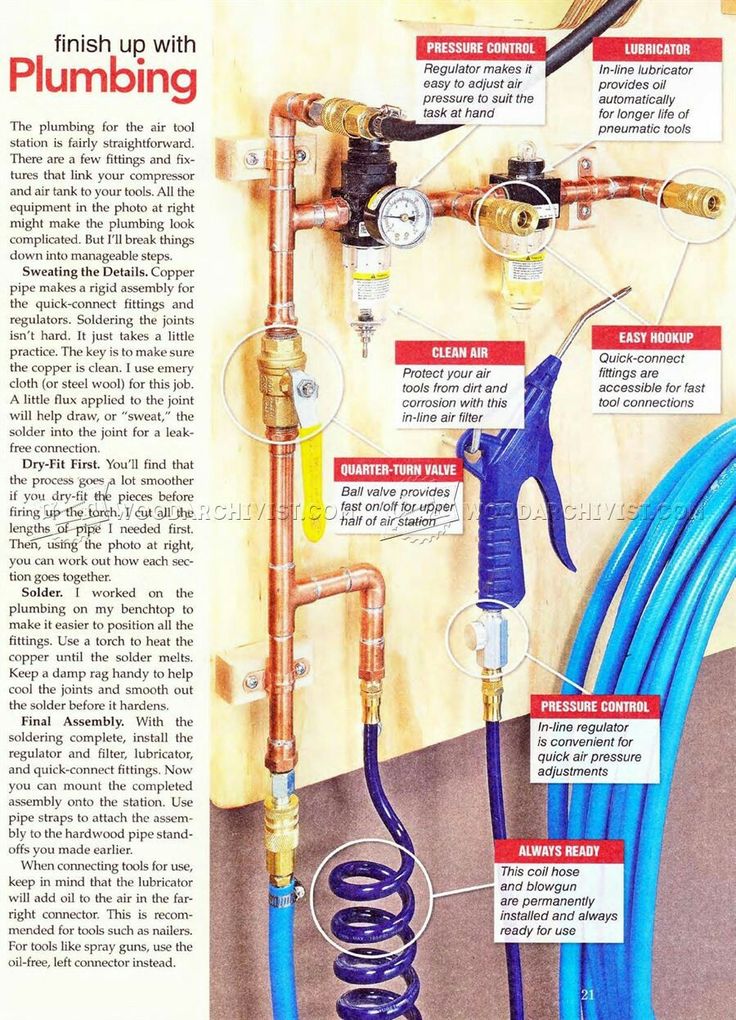 Be sure to look at the article on choosing a compressor, it also has its own nuances.
Be sure to look at the article on choosing a compressor, it also has its own nuances.
How to increase the service life of pneumatic tools?
Is it possible to ensure uninterrupted operation of the nailer during the cold season in an unheated room?
· No, it is impossible to ensure uninterrupted operation of the nailer during the cold season in an unheated room! Since this leads to a decrease in the elasticity of rubber seals, thickening of the lubricant, which subsequently leads to air leaks and loss of tool power.
How to reduce the amount of condensate in the pneumatic system?
How to increase the service life of a reciprocating compressor?
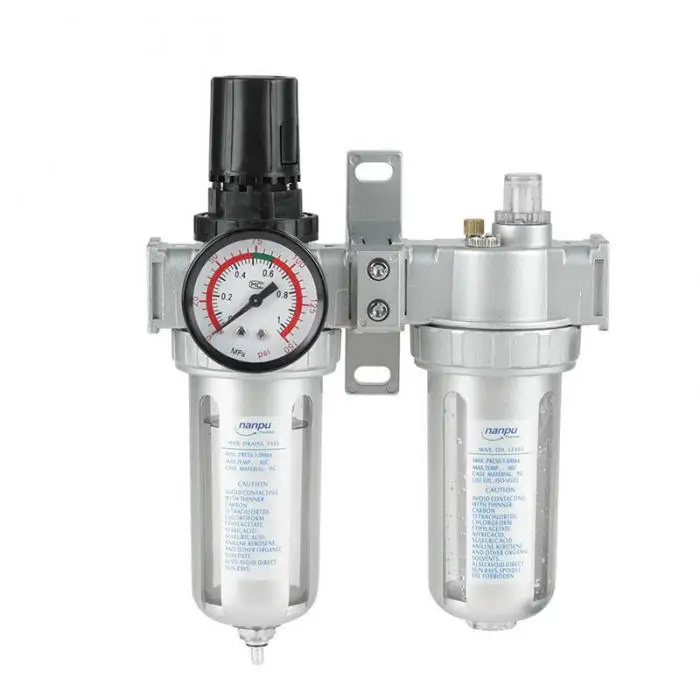 At ambient temperatures above 30°C, it is recommended to take air from outside the room or take special measures to reduce the temperature of the air surrounding the compressor! DO NOT use the compressor at an ambient temperature below 0°C!
At ambient temperatures above 30°C, it is recommended to take air from outside the room or take special measures to reduce the temperature of the air surrounding the compressor! DO NOT use the compressor at an ambient temperature below 0°C! 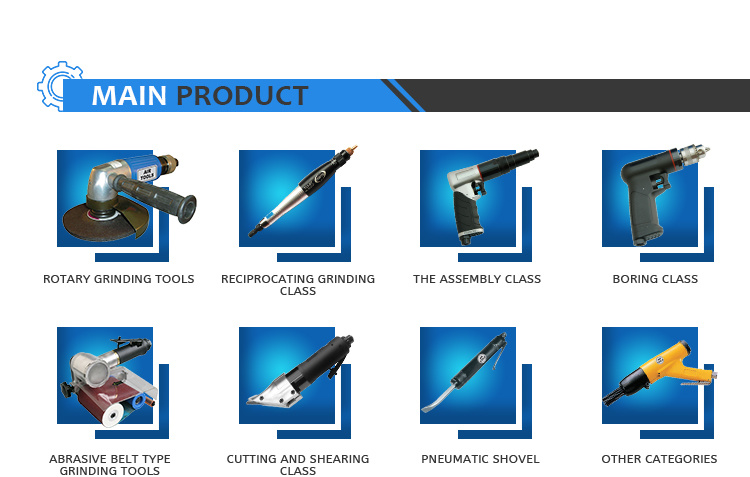 If necessary, top up the compressor oil recommended by the manual to the medium level. Avoid oil leaks from the connections and oil on the external surfaces of the compressor! IMPORTANT! Only specialized oil with a viscosity of 100 mm2/s can be poured into compressor equipment. This oil is specially designed for compressor units, is optimal for the compressor operating mode and is safe in compliance with all safety requirements.
If necessary, top up the compressor oil recommended by the manual to the medium level. Avoid oil leaks from the connections and oil on the external surfaces of the compressor! IMPORTANT! Only specialized oil with a viscosity of 100 mm2/s can be poured into compressor equipment. This oil is specially designed for compressor units, is optimal for the compressor operating mode and is safe in compliance with all safety requirements.  Only cotton or linen rags should be used as cleaning material! Clean all external surfaces of piston assembly and motor monthly to improve cooling.
Only cotton or linen rags should be used as cleaning material! Clean all external surfaces of piston assembly and motor monthly to improve cooling. What can be used to lubricate air tools?
Air tools can only be supplied with specialized air oil, with a viscosity of 32 or 46 mm2/s. This oil is not absorbed by rubber products and well protects tool parts from corrosion. NEVER USE ENGINE OIL! Engine and gear oils have a detrimental effect on the rubber seals in the tool!
How and with what frequency to lubricate pneumatic tools?
The easiest way to lubricate is to drop 2-5 drops of special oil into the inlet fitting of the tool every shift. But sometimes the employee forgets to do it. In this case, it is necessary to install a mini lubricator on the tool or use an air preparation unit. Use only oil intended for pneumatic tools, which has special additives; the use of industrial grades of oils leads to intensive wear of the rubber parts of the tool.
Is it possible to work with a blocked (missing) air tool release safety?
Do not operate an air tool equipped with a descent safety device with the safety device blocked! This is due not only to the safety of the worker and those around him, but also to the durability of the tool. When the trigger guard is locked, it is possible to descend without contact between the tool and the material being processed (into the air), while the striker of the tool, having a large kinetic energy of the shot, without meeting the resistance of the bracket when clogging, tends to break away from the piston, which abruptly stops (bounces) from the shock absorber. This often happens, especially in instruments with a solid mass of the striker (skeletons, studs).
During the operation of pneumatic equipment, it is necessary to control the receipt of clean air enriched with oil particles by the system. The filter is responsible for supplying and cleaning the air, but for the mixture is saturated with oily particles is a lubricator.
This attachment allows the air stream to be diluted with oil when sprayed, minimizing wear and extending tool life. This is especially relevant for masters who often use pneumatic equipment (service station employees, builders, workshop workers, etc.).
Models currently on the market are characterized by a self-contained design. The system at the same time allows you to adjust the supply of the oil mixture during operation, respectively, the pneumatic tool will receive exactly the volume of fluid that it needs.
During operation, the oil in the filling container can also be adjusted. It is important to use exactly the type of consumables recommended by the manufacturer: the use of an unsuitable or low-quality oil mixture can lead to damage to this element and the equipment itself. Only with certain knowledge and skills can you repair the tool with your own hands. In other cases, it is better to turn to professionals.
This device is a container made of a metal alloy, which is put on the inlet of a pneumatic tool and fixed with a thread. The device is installed immediately after the drying filter. After the air mass enters the device, it is saturated with oil and sent directly to the instrument.
The length of the hose between the instrument and the lubricator must not exceed 10-12 meters, otherwise the oil will be distributed inefficiently, and condensation will form on the walls, which adversely affects the efficiency of the application. In a situation where this hose length is not quite enough, you can use linear devices installed in front of the equipment.
These attachments also differ in the volume of the storage vessel a, material of manufacture and thread. In addition, the devices are multi-point and single-point, and their choice is made taking into account the conditions of the future application. In addition, according to the design of the device, there are two varieties:
The use of lubricators is mandatory for the full operation of pneumatic equipment. Their use is characterized by a large number of advantages:
Designs of this type must be selected, guided by the tasks and features of the application. You should pay attention to the following characteristics:
If you have any doubts regarding the choice, it is better to consult an experienced specialist. After buying a lubricator, you need to use only a certain oil mixture. You also need to prevent water from entering the fixture and from time to time look after the oil.
The price of lubricators depends on a number of factors:
The most profitable solution is to purchase a lubricator on the Internet. But first you need to decide what you personally need a lubricator for.
Camozzi industrial pneumatics are not required to be lubricated as during manufacture, a grease is laid, designed for the entire service life of the product. But if you do not use oil-moisture separators, then this samzka will eventually be washed out by moisture in the air. If additional lubrication (lubrication) is already supplied to the system, then its supply must not be stopped, because. this grease will also wash out the grease. The maximum amount of oil supply is 1 drop per minute for medium speed machines. The recommended oil viscosity is 32 cSt at 40 degrees. Celsius.
The use of oil sprayers (lubricators) is necessary in cases where the mechanisms are used in extreme conditions with a high frequency of operation - more than 40 times per minute, or with a high speed of movement - more than 1 m / s.
Each tool on each air duct must be equipped with an air preparation unit, which consists of an oil-moisture separator, a pressure regulator, an oil sprayer (lubricator). Installation should be carried out as close as possible to the instrument (up to 5 meters) and above it vertically. In the absence of an air preparation unit, lubricant can be directly poured into the lubrication hole on the tool, at least every half hour of operation.